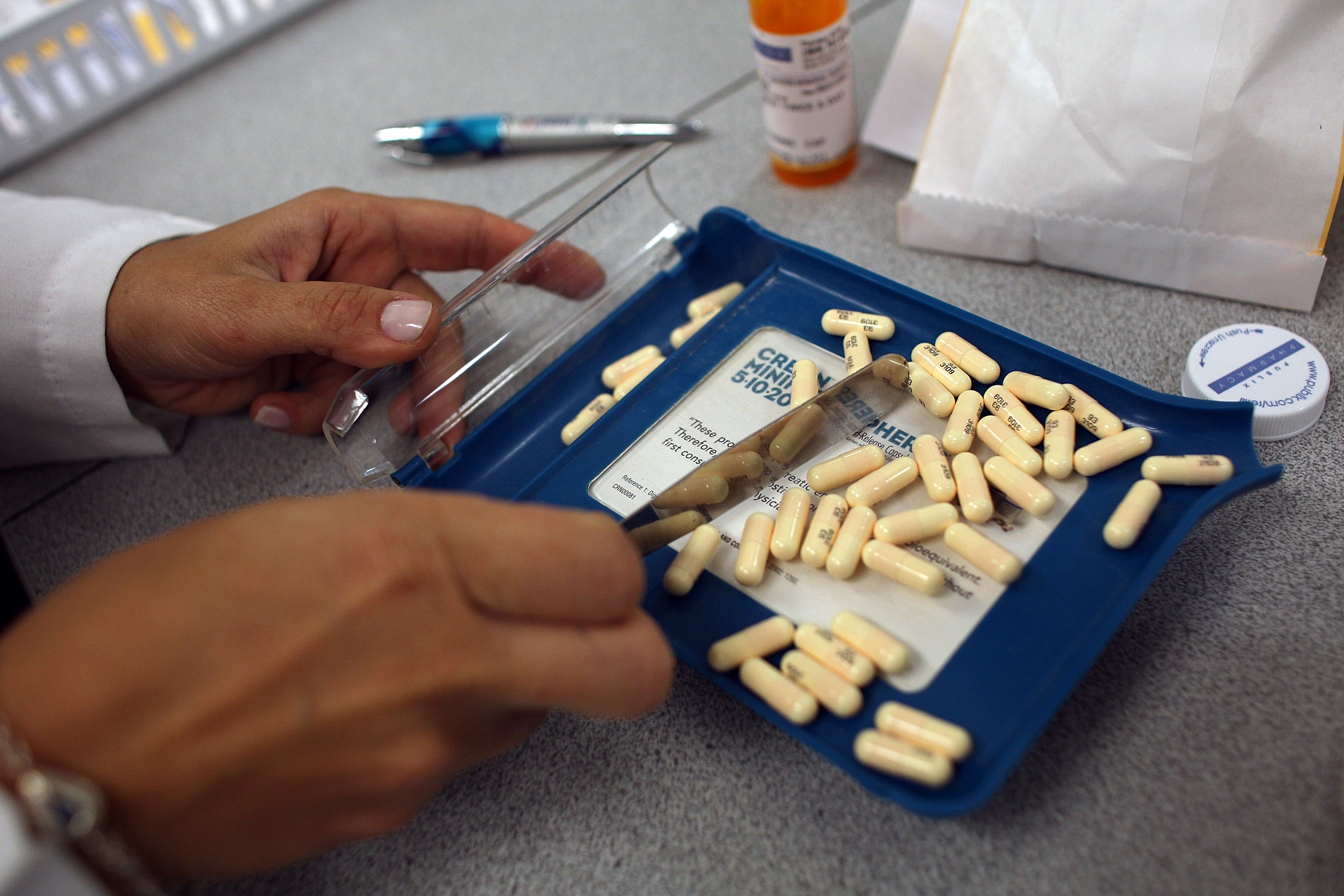Opinion: Trump’s Drug Pricing Plan Is Practical, but Is It Enough?
Administration’s blueprint aims to force drug companies to be more transparent

A husband visits a local pharmacy to fill his ailing wife’s monthly asthma prescription, which costs $110. What he doesn’t know — and what his pharmacist can’t tell him — is that her Part D insurance plan isn’t helping to reduce the cost. In fact, it’s only hurting. They could have saved $35 by paying out-of-pocket.
That’s the kind of problem President Donald Trump aims to solve with his new drug price plan. The blueprint he released earlier this month is practical, focused squarely on executive actions that will force drug companies toward greater transparency. But will the White House’s pragmatism be enough?
Trump wants to require manufacturers to include list prices in their television advertising and to ban Medicare Part D “gag clauses” that keep pharmacists from telling seniors how they can pay less.
He also wants to increase competition among biologics, experiment with value-based insurance purchasing in federal programs, allow for more Part D therapeutic substitution and expand the competitive acquisition program for Part B drugs administered by doctors.
Collectively, these proposals are designed to lower prices for consumers and bring clarity to what is all too opaque, including rebates negotiated between pharmaceutical companies and pharmacy benefit companies.
Just as important, most of the White House’s plan can move through executive and administrative actions rather than new legislation. Given the roadblocks to advancing anything but “must-pass” bills as the midterm elections approach, this may be the only practical route to change in the near term.
It is this very practicality that seems to annoy critics most. Opponents call the plan a win for the pharmaceutical companies because it doesn’t ask Medicare to “negotiate” prices for Part B and D drugs — a strategy President Trump had raised early in the primary process, though it wasn’t part of the Republican platform, his later campaign rhetoric, or his 2019 budget proposal to Congress.
The president’s newest focus is what he calls “global freeloading,” or the idea that foreign nations are negotiating drug prices at the expense of the United States. Trump is right that other countries have demanded much lower prices from pharmaceutical companies as part of their national health program negotiations and have been able to achieve them. As long as U.S. domestic purchasers are willing to pay higher prices for their drugs, it makes sense for drug companies to agree to lower foreign price differentials. Why? Because as long as negotiated foreign prices exceed domestic production costs of the drug, the company will still achieve a profit. Domestic sales of drugs account for two-thirds to three-quarters of annual profits.
From the Archives: Warren and Price Spar Over Medicare Funding
A recent Washington Post editorial suggests that other countries might voluntarily stop this type of “freeloading” if it were part of broader talks on trade issues, such as the Trans-Pacific Partnership that the president rejected. But given the number of countries that would need to agree to accept price hikes, this seems highly unlikely.
The reason most Republicans and some Democrats prefer competitive forces to keep costs down in the Part D drug program, which to date has remained a successful strategy, is that using administrative pricing (where the government sets prices as it does for other parts of Medicare) is more complicated for drugs. This is why the proposal recommends moving some drugs from the administrative pricing under Part B to the Part D competitive market.
If administered pricing is set incorrectly in other areas of Medicare’s clinical services, access is likely to be quickly affected in a way that is not true for drugs. This is because it takes a long time to get a drug to market and because of the low production costs once it is on the market.
Ultimately, the pricing needs to reflect the average of getting a drug to market and developing related ones that never make it. If the administered price is set below this average cost but above the production cost, manufacturers may continue to produce the drug once it has been approved, but they will not continue to make future investments. And that would hurt patients in the end.
The political question is whether the administration’s proposals will be enough to make a visible dent in drug prices in the near term. Time will tell.
Gail R. Wilensky co-chairs the Bipartisan Policy Center’s Future of Health Care Initiative. She also serves as a senior fellow at Project Hope and is a former administrator of the Health Care Financing Administration.
The Bipartisan Policy Center is a D.C.-based think tank that actively promotes bipartisanship. BPC works to address the key challenges facing the nation through policy solutions that are the product of informed deliberations by former elected and appointed officials, business and labor leaders, and academics and advocates from both ends of the political spectrum. BPC is currently focused on health, energy, national security, the economy, financial regulatory reform, housing, immigration, infrastructure, and governance. Follow BPC on Twitter or Facebook.





